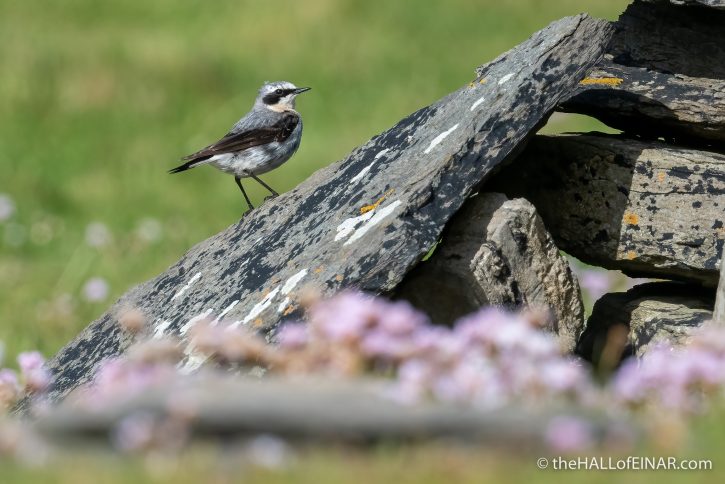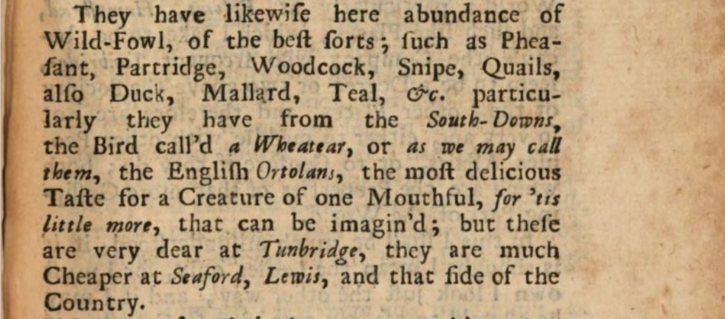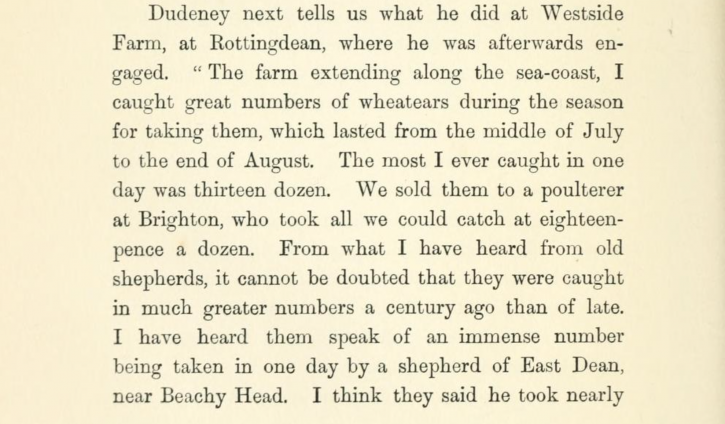The most delicious taste for a creature of one mouthful
It’s always a delight to see a Wheatear. They’re quite incredible in their capacity to migrate. They can travel many thousands of miles on migration from the Arctic to the south of the Sahara. They nest on Westray in the safety of rock piles before winging their way south.

They’re a treat for the eyes, but here’s what Daniel Defoe had to say about Wheatears:

…particularly they have from the South-Downs, the Bird call’d a Wheatear, or as we may call them, the English Ortolans, the most delicious Taste for a Creature of one Mouthful, for tis little more, that can be imagined; but these are very dear at Tunbridge, they are much cheaper at Seaford, Lewis, and that side of the Country.
I’m sure Robinson Crusoe would have enjoyed eating one.
The Wheatear’s love of sheltering in rabbit holes and under rocks meant there was a large industry of catching them in specially dug traps with horsehair snares. A shepherd could trap two-dozen a day, wring their necks, send them to the poulterers of the south coast and add considerably to his income. The prevailing view was that Wheatears had been created to be eaten by important persons. The Judaeo-Christian tradition that the world has been specially created for us to meet our needs alone has a lot to answer for.
In 1900, William Henry Hudson described events from a hundred years earlier when a shepherd named John Dudeney wrote:


1,200 Wheatears dead in one day on one farm. The reason they eventually stopped trapping them? They’d trapped all of them and eaten them.
William Henry Hudson was damning in his indictment of Wheatear-eaters in Nature in Downland.
But the feeling of intense disgust and even abhorrence the practice arouses in all lovers of nature grows, and will continue to grow, and we may look forward to the time when the feeders on skylarks of today will be dead and themselves eaten by worms, and will have no successors in all these islands.